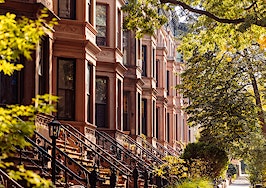At Inman Connect Las Vegas, July 30-Aug. 1 2024, the noise and misinformation will be banished, all your big questions will be answered, and new business opportunities will be revealed. Join us.
Home prices in 93 percent of U.S. metro areas (205 out of 221) rose in the first quarter, even as mortgage rates hovered below 7 percent, according to quarterly data released Wednesday by the National Association of Realtors.
A remarkable 30 percent of the metro areas tracked by NAR enjoyed double-digit price growth from the fourth quarter of 2023, with prices rising by 15 percent. Low inventory drove prices despite some of the highest mortgage rates in decades, NAR Chief Economist Lawrence Yun said.

Lawrence Yun
“Astonishingly, greater than 90 percent of the country’s metro areas experience home price growth despite facing the highest mortgage rates in two decades,” Yun said in a statement. “In the current market, rising prices are the direct result of insufficient housing supply not meeting the full demand.”
The national median single-family, existing-home price rose 5 percent year over year to $389,400, NAR reported. During the fourth quarter of 2023, the national median price increased 3.4 percent on an annual basis.
By region, the South saw the greatest share of single-family existing-home sales at 46 percent while holding the most modest annual price appreciation of 3.3 percent. In the Northeast, prices spiked 11 percent year over year, as the Midwest and West saw annual price gains of 7.4 percent and 7.3 percent, respectively.
The 10 metro areas that saw the greatest annual price appreciation all posted gains of at least 18.2 percent, NAR reported. Six of those 10 markets were located in Illinois and Wisconsin.
Top 10 metro areas that saw the greatest annual price appreciation:
Fond du Lac, Wiconsin: prices grew 23. 7 percent YOY
Kankakee, Illinois: prices grew 22.0 percent YOY
Rockford, Illinois: prices grew 20.1 percent YOY
Champaign-Urbana, Illinois: prices grew 20.0 percent YOY
Johnson City, Tennessee: prices grew 19.3 percent YOY
Racine, Wisconsin: prices grew 19.0 percent YOY
Newark, New Jersey-Pennsylvania: prices grew 18.8 percent YOY
Bloomington, Illinois: prices grew 18.5 percent YOY
New York-Jersey City-White Plains, New York-New Jersey: prices grew 18.4 percent YOY
Cumberland, Maryland-West Virginia: prices grew 18.2 percent YOY
Home prices were highest in the West, with eight of the top 10 most expensive markets located in California. San Jose-Sunnyvale-Santa Clara, California ($1.84 million; up 13.7 percent); Anaheim-Santa Ana-Irvine, California ($1.37 million; up 14.2 percent); San Francisco-Oakland-Hayward, California ($1.3 million; up 14.0 percent); Urban Honolulu, Hawaii ($1.09 million; up 5.5 percent); and San Diego-Carlsbad, California ($981,000; up 11.5 percent) were the five priciest markets in the country.
“The expensive markets in the West, where home prices declined last year, are roaring back,” Yun said. “Price dips in that region were viewed as second-chance opportunities by many buyers.”
Just 7 percent of markets analyzed saw home price declines during Q1 2024, down from the 14 percent that saw declines during Q4 2023.
Over the course of the quarter, affordability improved as mortgage rates decreased. The monthly mortgage payment on a typical existing single-family home with a 20 percent down payment was $2,037 during the first quarter, down 5.7 percent from $2,161 during the fourth quarter, but up 9.3 percent (or $173) from the year before.
Still, first-time homebuyers faced challenges with limited inventory and higher home prices, even though their lot improved from the quarter before. The monthly mortgage payment on a typical starter home costing $331,000 with a 10 percent down payment fell by 5.7 percent to $1,998, down from $2,118 in the previous quarter. Still, that was $168 (9.2 percent) more than the typical payment one year ago.
Families needed a qualifying income of at least $100,000 to afford a 10 percent down payment in 40.7 percent of markets, down from 47.1 percent during Q4 2023. However, a family needed a qualifying income of less than $50,000 to afford a home in 4.5 percent of markets, up from 2.3 percent the quarter before.













